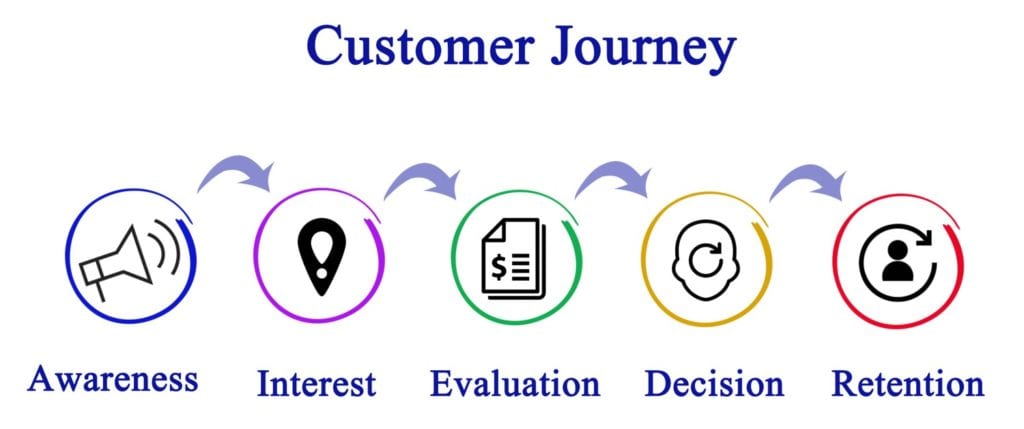Learn more about what customer journey maps are – and why you should be using them in your business.
In a previous post, we provided an introduction to customer journey mapping, a tool that maps out the customer experience, from initial contact with your brand to the purchase decision and beyond. Today we are going to discuss more tools and resources to help you with your customer journey mapping training efforts. If you would like to learn more about this tool to improve business or organizational practices, keep reading below or visit our journey mapping workshops page to dive deeper.
Conducting Research for Journey Mapping
In order to create an informed and effective customer journey map, you need to first conduct solid research. Use both existing research your company has on your customers – from sources such as social media, website analytics, or surveys – as well as other sources such as focus groups. The best research will incorporate direct input from customers about what they are looking for, how they feel about your brand, and what improvements in your product or service would make their lives easier.
Important Elements of Journey Maps
Customer journey mapping training should focus on gaining insights into the key elements of building a successful journey map. Here are a few tips and tricks on how to do so:
- Understand the “why”, the “what” and the “who”. Know what business goal your journey map is supposed to support. You will also need to know who will use the map, who the map is about and what experience of theirs it addresses.
- Collaborate with others: Collaboration serves a key role in innovation. Incorporating many people from different areas of your organization will ensure all ideas and solutions are heard. You may gain further insights into your customers by listening to your employees, so don’t count out anyone, even if they aren’t a member of the journey mapping team.
- Think across touchpoints. Larger organizations in particular have this habit of separating departments and siloing their products and services. Customers, however, will think about your company from a holistic view. Therefore, seeing the larger picture and mapping out customer experience across different touchpoints is key. You will be able to gain better insights and know where you need to improve as a organization overall.
- End the process with visuals. Once the data has been collected and analyzed, consider turning it into a visual representation. Visuals help shareholders understand what is happening more easily, and they can also help you connect the dots further between different areas of your business and customer pain points.
Articles, Examples, and Videos For Customer Journey Mapping Training
For a further analysis of journey maps, consider checking out the following resources:
- A Beginner’s Guide to Customer Journey Maps
- How to Start with Creating Maps
- UX Mastery Video
- 6 Examples of Maps + Templates
- Customer Experience Mapping Templates
You can find software and helpful tools available online to help you build your own customer journey map or templates to work from – such as Miro templates and Mural templates.
These customer journey mapping training resources will help you begin to explore the ways in which journey maps can help improve your business’ strategies. For further resources, tips, and tricks, check out our innovation and design thinking resource blog.
Interested in setting up an in-person innovation or design thinking training event at your organization? Contact us today for more information.

